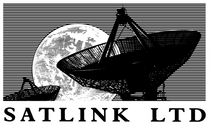LEO Satellites affecting SatCom ground infrastructure
LEO Satellites affecting SatCom ground infrastructure

Low Earth Orbit satellites are currently orbiting the Earth at an altitude of about 300 -1000 miles, as you can see from the picture above, the LEO orbit is quite dense with these smaller satellites. During the 21st century LEO satellites have become the preferred choice of satellite to launch by organisations like Starlink and Oneweb, these are the satellites that are usually visible to the naked eye crossing from horizon to horizon in 2 minutes. Advantages of LEO satellites include; low transmission latency, easier & cheaper to launch and they have a shorter mission lifetime meaning less planning and preparation has to be made compared to a GEO satellite which stays in operation for 10 years +.
This change of orbit strategy is for the following reasons;
1. Rocket launches are now showing lower failure rates. This is encouraging satellite operators to launch more satellites into orbit. To take advantage of this capability, operators are launching lots of LEOs as GEO satellites take more time and investment to launch into space.
2. Satellites are getting smaller (Oneweb’s satellites being the size of a washing machine) meaning more satellites can be launched into orbit from one rocket. In September 2020, Starlink launched 60 satellites on the Falcon 9. (Shown on Elon Musk’s image below this text)

3. By harnessing the increased rocket payload with additional LEO satellites, enhanced coverage is achieved not only in rural areas but particularly in populated areas with line of sight obstructions (e.g. city / urban areas) better than satellites in GEO. This is because the satcom antenna on the ground will have a better chance on connecting to a LEO satellite in a populated constellation compared to a GEO satellite which may only have one satellite in view within a sparsely populated geosynchronous constellation.
The result of this step change is as follows;
1. LEO satellites move at a speed of approximately 16,000mph, they have a line of sight link to any one point on earth for roughly 2 minutes, because of this satellite movement the ground antenna needs to constantly adjust the angle of connection to keep up with the satellite.
There are two methods keeping this connection intact from the ground segment;
(a). Being a mechanical stabilisation system that physically steers the dish towards a specific satellite.
(b). Being Phased Array and electronically steered antennas like Phasor and Kymeta which create an electronic beam to the specific satellite without physically moving the antenna.
Mechanically steered antennas have a higher gain (higher transmission speeds) than phased array or electronically steered antennas which is why the mechanically steered antenna is by far the most common way to transmit big data to satellites. As the technology for Phased Array or Electronically steered antennas develops they will quickly overtake the demand for Geo stabilised antennas.



2. The difference between Geo stabilised antennas and Phased array / electronically steered is the SWaP (size weight and power). The Geo stabilised antenna has to physically move a satcom antenna dish, therefore it requires heavy machinery and a dish housing dome leaving the whole system quite big and heavy. The phased array / electronically steered antenna works with no moving parts and therefore doesn’t require large & heavy steering machinery and a large housing dome. Once the phased array / electronically steered antenna increases its transmission performance it can compete with the the geo stabilised antenna and capitalise on its SWaP advantage and monopolise the satcom antenna market.
3. The distance data has to travel from earth to a satellite and back brings a slight transmission delay or ‘Latency’ as its known in the satellite industry. One of the advantages of LEO satellites is the shorter distance travelled compared to GEO satellites which in turn reduces the ‘latency’ of the transmission.
4. Satellite communication is more expensive than most other methods of communication - this is why it is normally used as a backup or redundant comms link. The new series of LEO satellite constellations including Oneweb and Starlink are most most likely to be cheaper than GEO satellite networks at a transmission cost because less power is required to transmit to and from LEO satellites than GEOs but offer transmission speeds significantly lower than what GEO networks can offer.

My point of interest now leads to investigating what applications will utilise this figurative satellite ‘hardware upgrade’ to offer - especially what role satellite will have aiding the terrestrial 5G roll-out.
